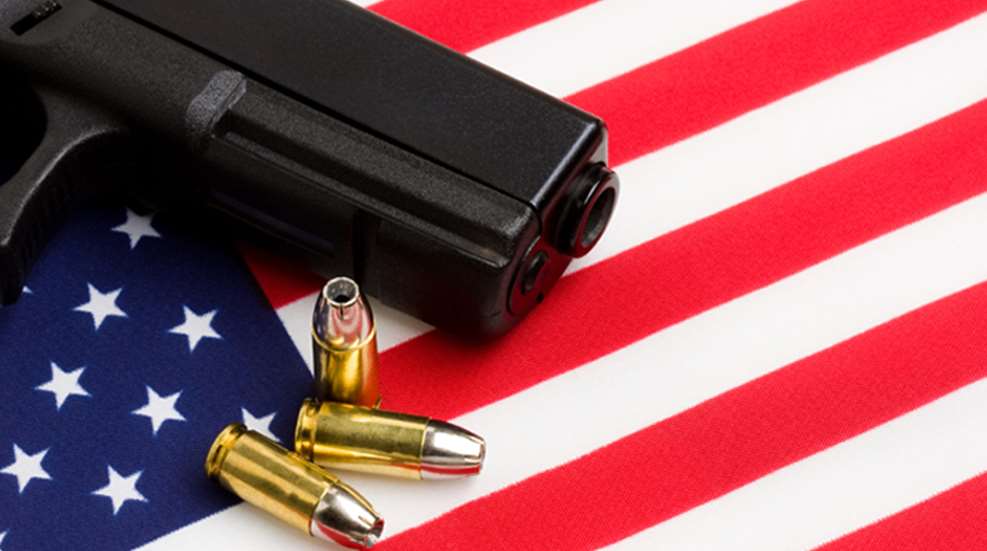
Adherents to gun control typically respond with emotional arguments. However, on those occasions when they attempt to respond with "logic" regarding the Second Amendment itself, those arguments typically take the same tired forms. Here are three of the most popular, and how to dismantle them instantly.
Myth #1: You have to have a license to operate a car. Why shouldn't you have to have one to own a gun?
Reality Check: Owning a car is not a right; it's a privilege. Owning a gun is a right. There is no enumerated right to own or drive a car. A license generally isn't required to own a car, or to operate it on private land. Also, gun-control advocates who make the "treat guns like cars" argument would probably be strongly opposed to a reciprocity system for those licensed to carry firearms that was as good as the reciprocity system for driver's licenses. (And if they say guns are more dangerous, point out how many people are killed by cars every year.)
Myth #2: The Second Amendment specifies that owning a gun is only for serving in "a Well-regulated militia"-what we now call the National Guard. That means gun ownership is a collective right of the people (not individuals), and that guns must be controlled by the government.
Reality Check: First off, the opening to the Second Amendment is a dependent clause. It helps explain and justify the independent clause that follows, but is not essential to making that clause true. Moreover, back in the day when the Constitution was written, "well regulated" didn't mean "controlled." It meant "well practiced" or "well drilled." And the militia wasn't anything like today's National Guard: All able-bodied males were deemed to be in the militia in time or threat of war.
Further, in order for "the people" to indicate the citizenry as a whole rather than the individual, the Founding Fathers would have had to use it to mean an individual in the First Amendment, then the collective in the Second Amendment, and back to an individual in the Fourth, Ninth and Tenth amendments. In the landmark 2008 District of Columbia v. Heller decision, the Supreme Court agreed, stating: "Nowhere else in the Constitution does a ‘right' attributed to ‘the people' refer to anything other than an individual right." D.C. v. Heller, 554 U.S. 570, 580 (2008). This led them to the conclusion: "There seems to us no doubt, on the basis of both text and history, that the Second Amendment conferred an individual right to keep and bear arms." D.C. v. Heller, 554 U.S. 570, 595 (2008).
Myth #3: The Founding Fathers couldn't have foreseen the technological developments that have led to such things as "black guns." The Second Amendment right was intended only for muzzleloading flintlocks.
Reality Check: When I hear this, I always ask people if they know what a phaser is. "Oh," they'll say, "that ray gun from Star Trek." Then I'll point out that they don't exist, even though we "know" what they are. Imagination didn't begin in the 20th or 21st centuries. To say that men like Thomas Jefferson and Benjamin Franklin-who were among the leading inventors of their day-couldn't have foreseen technological advancements is patently absurd. Moreover, some technological concepts that we think of as modern are quite old. For example, there is a 12-shot flintlock in the NRA National Firearms Museum. Manufacturing techniques and the absence of industrialization were more limiting factors than imagination back then.
Perhaps most compellingly, if the Second Amendment referred only to technology extant at the time it was drafted, then the First Amendment doesn't apply to radio, movies, television or the Internet. Once again, the Supreme Court agrees, stating: "Some have made the argument, bordering on the frivolous, that only those arms in existence in the 18th century are protected by the Second Amendment. We do not interpret constitutional rights that way. Just as the First Amendment protects modern forms of communications and the Fourth Amendment applies to modern forms of search, the Second Amendment extends, prima facie, to all instruments that constitute bearable arms, even those that were not in existence at the time of the founding." D.C. v. Heller, 554 U.S. 570, 582 (2008)
Calmly and politely explaining these facts can go a long way to change someone's mind about the Second Amendment and what it means. Spread the word!





































